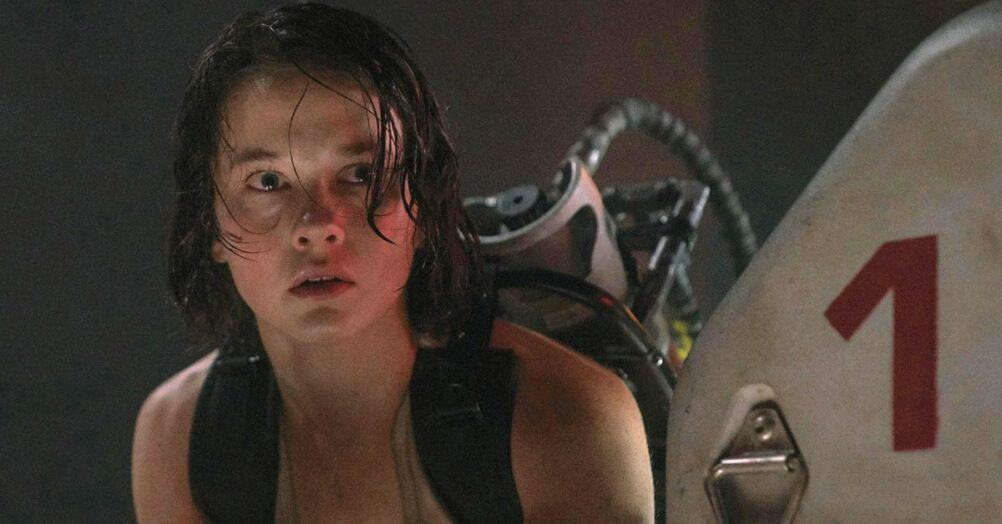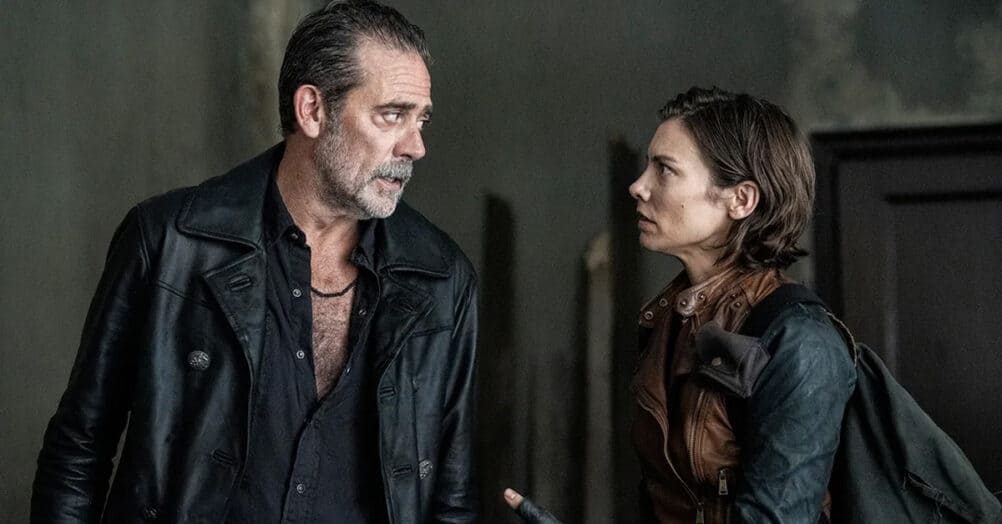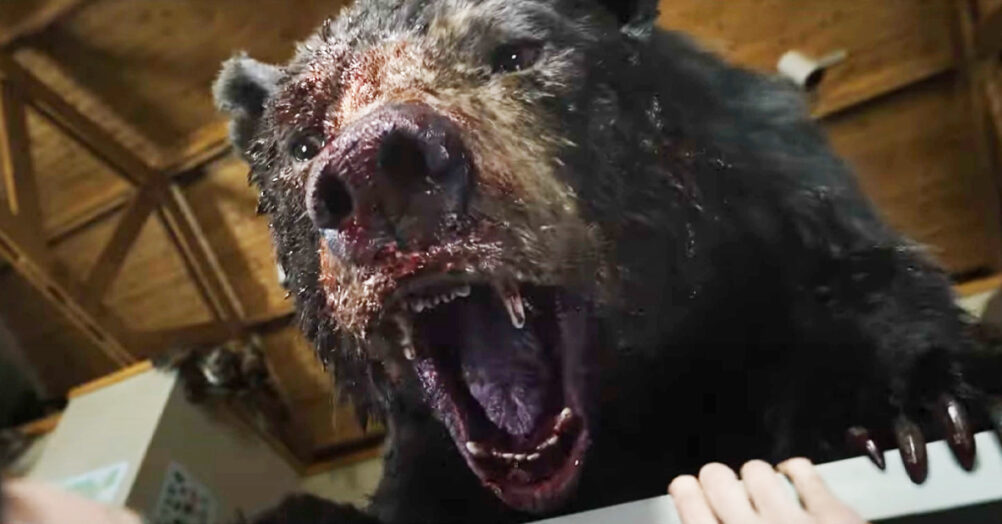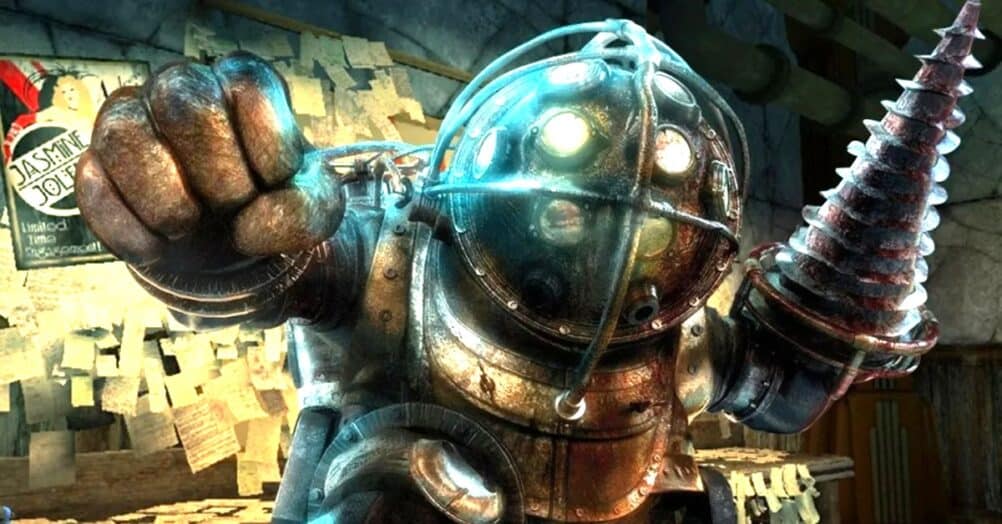Last Updated on July 26, 2024
A director who was thought to be past his prime. Scenes that attempt to get laughs out of the deaths of adorable animals. A lead actor who was very nervous about his comedic performance. Reshoots resulting from negative test screening reactions. It sounds like a recipe for disaster, but this is actually the story of the hit British comedy A Fish Called Wanda, the movie we’re looking at in this episode of Revisited.
SET-UP: From 1947 to 1958, the British film studio Ealing produced a series of beloved comedies that have come to be known, appropriately enough, as “the Ealing comedies”. The Lavender Hill Mob, Kind Hearts and Coronets, The Ladykillers, they’re all Ealing comedies, and several of the films in the series were directed by a man named Charles Crichton. Actor John Cleese, best remembered for his work in the Monty Python comedy troupe, didn’t get into the entertainment business until a decade after the Ealing comedies had come to an end, but pretty much from the moment he started acting he began hoping to team up with Crichton on their own comedy feature. It just took them a while to get their movie into production. About twenty years, in fact.
Cleese and Crichton worked together on some TV projects in the ‘70s and early ‘80s, but they didn’t start crafting the story for their movie until 1983 – and when the brainstorming began, they only had two ideas: Cleese wanted to have a scene in which a stuttering character has to deliver some important information, while Crichton just wanted someone to be run over by a steamroller. The duo would meet up three times a month to discuss the story they built around those two ideas, and over the course of two and a half years and thirteen drafts they created the screenplay for A Fish Called Wanda.
Several of the characters in the film are thieves who have gathered together in London to pull off a diamond heist worth thirteen million pounds, but this isn’t the sort of movie that spends most of the running time building up to the heist. The diamonds have been stolen within the first twenty minutes, then the problems come after the thieves have the diamonds in their possession. The heist was masterminded by an Englishman named George Thomason, who is played by Tom Georgeson and has a devoted lackey in fellow Englishman Ken Pile, the stuttering character Cleese had in mind from the beginning. Unfortunately, George brought a seductive American named Wanda into the mix, and Ken is also so enamored with her that he names one of the fish in his fish tank after her. Thus the title. They need a weapons expert to help pull off the heist, so Wanda suggests her brother Otto, who is supposedly a former CIA agent. Otto may or may not have been in the CIA, but he’s definitely not Wanda’s brother – the pair have actually been in a relationship for the last two weeks, and they’re planning to steal the stolen diamonds out from under George and Ken. They set George up to be caught by the police, and it isn’t until George is already in jail that they realize he moved the diamonds after they parted company and put them somewhere they don’t know about. Figuring George will tell his lawyer where the diamonds are in exchange for a lighter sentence, Wanda sets out to seduce the information out of his barrister… a plan that doesn’t sit well with the insanely jealous Otto, who insists he isn’t jealous. Hilarity ensues, just as you hope for from a comedy.
Cleese wrote the four main characters with specific actors in mind: he would take on the role of the barrister named Archie Leach, which happened to be the real name of iconic actor Cary Grant; he envisioned Jamie Lee Curtis, who he had seen in Trading Places, as Wanda; he wrote the role of the high-strung moron Otto for Kevin Kline after seeing him in Sophie’s Choice and working with him on Silverado; and Ken Pile was a perfect character for his fellow Monty Python veteran Michael Palin to play. It’s no shock that Cleese got exactly the cast he wanted, even though Curtis thought it was a mistake when she heard he wanted to get in contact with her. She assumed he’d rather collaborate with her husband Christopher Guest, since he had co-written and starred in the 1984 comedy classic This Is Spinal Tap. Cleese wanted to work with Curtis instead, but did make an appearance in Guest’s film The Big Picture the year after A Fish Called Wanda was released.
The only collaborator Cleese brought to the table to be met with resistance from the studio was the one the project had originated with, Charles Crichton. Not only was the studio concerned about Crichton’s directing ability, since he hadn’t made a theatrically-released movie since 1965, but they were also worried about his age: Crichton would turn 77 in the midst of production. Just in case the director was too rusty or were to drop dead on set, they had Cleese take on the uncredited job of co-director – making this his feature directorial debut, although he didn’t have much to do since Crichton proved to be competent and in good health. That was fine with Cleese, who admitted that he didn’t know anything about directing anyway.
With Crichton at the helm, A Fish Called Wanda was shot in just four weeks and it came together so well that it’s considered to be one of the best comedies ever made.
REVIEW: Cleese named his character Archie Leach because he figured this would be the closest he’d ever get to playing a Cary Grant type of role. What’s surprising is that he basically gave himself the “straight man” role in the film, and that even came as a surprise to Cleese himself. When the cast got together for a read-through of the script before filming began, all of the characters and performances worked except for Cleese’s read of Archie. He came to realize that he couldn’t try to push the character over-the-top to make him funnier than he was on the page, but instead had to step back and be a more grounded character in the middle of the madness caused by Kline and Palin’s characters. Which isn’t to say that Cleese doesn’t get any laughs in the movie, just that his comedic moments are more low-key than the antics around him.
Archie is a stuffy fellow with a soul-crushing home life; he’s married to a woman who barely pays any attention to him, and they have a spoiled teenage daughter, played by Cleese’s own daughter Cynthia. So when Wanda shows an interest in him, he doesn’t realize he’s being tricked in a quest to find the diamonds, he just immediately falls head-over-heels. This puts him into some bad situations that are very amusing to watch play out, including a few scenes where people walk in on him while he’s trying to romance Wanda. He happens to be completely nude in one of those scenes – and Cleese wasn’t originally supposed to be the character who is caught naked, he had initially written the scene for Wanda. Not interested in doing nudity again after Trading Places, Curtis convinced him to undress instead.
Archie is cheating on his wife to hook up with Wanda, none of the characters in this movie are without their flaws, but we feel sorry for him at the same time because we know he’s being conned. Not to mention the amount of stress and humiliation the tryst causes for him, even leading to a moment where he gets knocked unconscious while staging a robbery of his own house. You can’t say he doesn’t put effort into this affair.
As funny as the scenes with Archie are, Kline and Palin really do run away with the show. Kline’s unforgettable performance as the British-hating, armpit-sniffing, idiotic Otto is so energetic and over-the-top that it’s almost exhausting to watch… and you might get exhausted from laughing at the character’s stupidity. It’s a terrific comedic performance that’s made all the more impressive by the fact that Kline was racked with anxiety throughout the shoot, as he never felt comfortable with what he was doing. That discomfort was worth it, because he won a Best Supporting Oscar for this role, beating out the likes of Martin Landau, Dean Stockwell, River Phoenix, and Ealing comedy veteran Alec Guinness.
The funniest moments Curtis gets are connected to Otto’s buffoonery, as we see that she gets extremely turned on whenever she hears a language other than English being spoken. Otto manipulates this by pretending to be fluent in Italian, even though most of the words he knows are lifted from restaurant menus. Who knew talk of eggplant parmesan could be so arousing?
Some viewers may not appreciate that A Fish Called Wanda attempts to get a lot of laughs out of Ken’s stutter, which gets better and worse depending on how stressed the character is feeling in the moment. Palin’s father had what he described as a “serious and disabling stammer”, so he worked some of his father’s issues into the performance. When confronted about the problem of playing a stutter for laughs, Palin was inspired to open the Michael Palin Centre for Stammering Children, which is now one of the premier treatment centers in the world for childhood stuttering.
Since this movie has a primarily British cast and came from a British writer and director, the producers were worried that audiences outside of England wouldn’t be receptive to its humor, and co-producer Michael Shamberg, who was an American, went through the script to make sure there wouldn’t be any jokes that might be considered “too British”. While he was doing that, he certainly didn’t remove any of the jokes that might be considered too dark, and that did lead to some trouble when the film was in post-production.
Ken has a subplot that involves him trying to assassinate an old lady named Eileen Coady, played by Patricia Hayes, who was nearly eighty years old at the time of filming. As if that weren’t already dark enough, the humor of the situation comes from the fact that Ken repeatedly fails, and instead of killing the old lady he accidentally kills one of her Yorkshire terriers on each attempt. Yes, the movie wants you to laugh at the sight of adorable little dogs meeting an untimely end, on three different occasions. This wouldn’t work at all if the character causing the deaths of the dogs was Otto, since he despises animals so much that he refers to them all as insects. It’s funny because Ken is an animal lover; he likes animals better than humans, even has an anti-animal cruelty poster hanging on the wall in his apartment, and here he is killing dog after dog. He’s more appalled and devastated by this than even the most disapproving viewer would be.
Dogs aren’t the only animals killed in the name of comedy in A Fish Called Wanda. There’s also a sequence where Otto tries to torture information out of Ken by eating the fish from his fish tank one-by-one. Of course, no animals were actually harmed in the making of the film. When Otto sticks the Wanda fish in his mouth, it was reportedly made of Jell-O, while the other fish we see him chewing on were made of a rubbery substance that tasted so bad, Kline offered to eat real fish in the scene just so he wouldn’t have that taste in his mouth anymore. Otto gets his comeuppance for the fish slaughter – he’s the one who gets run over by a steamroller.
There were objections when a test screening audience saw all of this death and torture, especially since Crichton did not hold back when showing the deaths of the dogs. The first cut of the film had Yorkshire blood and guts splattered across the screen. Viewers were so disgusted, the crew had to go back for reshoots to tone down the way the deaths were presented, making them more cartoonish. This change was beneficial to the movie, as the dog death scenes are hilarious as a result, with one shot of a run-over pooch looking like it came straight out of Looney Tunes.
The torture sequence was also toned down, and Otto was spared thanks to the testing process. Getting run over by the steamroller was supposed to kill him, as it would. But audience members didn’t want him to die, so a moment was added to assure us that he survived getting flattened, unlike Eileen Coady’s dogs.
The most surprising request made by people who saw the test screening was that they wanted a “happily ever after” ending for Archie and Wanda. Although Wanda was just trying to get information out of Archie and it’s played that way for most of the movie, the audience actually fell for Wanda’s act along with Archie and decided their relationship needed to be real. A couple changes were made to twist the situation in that direction, but Curtis was not happy about this, feeling like they were wimping out by giving Archie a happy ending. An ending where we know Archie is going to get screwed over as soon as the credits start rolling seems much more fitting for the movie than the one it ended up with, but at least they made the test screening audience happy.
While the very ending of the film feels like a misstep, the final version of A Fish Called Wanda – honed through test screenings, reshoots, and an editing process that saw around twenty minutes being whittled out of the running time – is a great, fast-paced comedy that’s fun to watch despite being about awful people. Carried by strong performances, it amuses with some bedroom farce type material and also wrings laughs out of situations you wouldn’t typically expect to laugh at. All the time Cleese and Crichton spent on the script paid off, and not just because they had the script in near-perfect shape by the time filming began. That script also earned them an Academy Award nomination and served as the foundation of a hit movie.
LEGACY/NOW: Made on a budget of eight million dollars,A Fish Called Wanda ended up earning nearly one hundred and ninety million at the global box office when it was released in 1988, then went on to become the number one VHS rental of 1989 in the US. In addition to all the financial success, it also received a lot of critical praise, and then started racking up the award nominations. Charles Crichton, the director the studio had been worried about before production began, was nominated for Best Director at the Academy Awards… but the only Oscar the movie won went to Kevin Kline. There were also Golden Globe and BAFTA nominations, and not just for the leads – Maria Aitken received a BAFTA nomination for her role as Archie’s wife Wendy. She didn’t win in her category, but Cleese and Palin both won BAFTA awards.
Over the years, A Fish Called Wanda has been featured on multiple lists of the best comedies of all time, including lists published by the American Film Institute, the British Film Institute, Premiere magazine, and Empire.
But perhaps the greatest honor the film has ever been given is the fact that it actually caused a man to laugh himself to death. That man was Doctor Ole Bentzen, a 56-year-old Danish audiologist who went to see A Fish Called Wanda in 1989 and laughed so hard at the Otto and Ken torture scene that he went into cardiac arrest and died right there in the theatre. As part of the torture, Otto sticks fries – or chips, as they’re called in England – into Ken’s nostrils, and the sight of this was reportedly what sent Doctor Bentzen over the edge, as it reminded him of a time he and his family goofed around and stuck cauliflower in their nostrils at the dinner table. Cleese himself thought the torture scene was the funniest thing he had ever seen, but he couldn’t have expected that it would be lethally amusing. The filmmakers considered getting in contact with Bentzen’s family and asking if they could mention his death in the marketing, but ultimately decided it would be in poor taste. And the movie did just fine without capitalizing on the fact that it caused someone to laugh themselves to death.
With all this success, it makes sense that there was a follow-up of sorts. The 1997 film Fierce Creatures isn’t a sequel, but it did bring John Cleese, Michael Palin, Kevin Kline, Jamie Lee Curtis, Maria Aitken, and Cynthia Cleese back together. Charles Crichton sat that one out, having retired in 1988 – and lucky for him, because Fierce Creatures didn’t do very well at the box office or with critics. Cleese would go on to say that he regretted making the movie at all.
Fierce Creatures didn’t work, but A Fish Called Wanda still holds up as a comedy that’s worth seeking out more than thirty years after its release and that unfortunate death. Just a word of warning: when you watch it, be careful not to laugh too hard.


















Follow the JOBLO MOVIE NETWORK
Follow us on YOUTUBE
Follow ARROW IN THE HEAD
Follow AITH on YOUTUBE